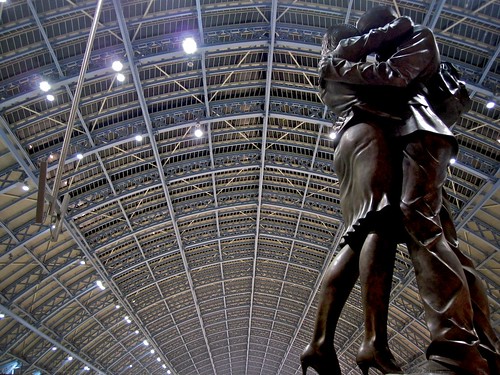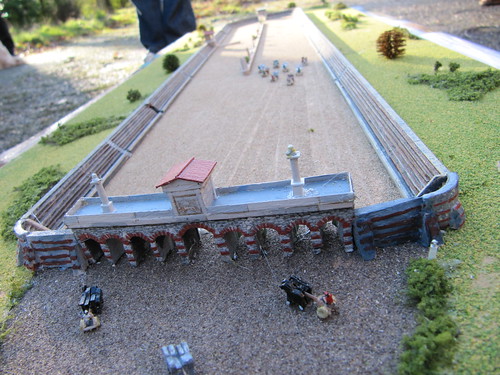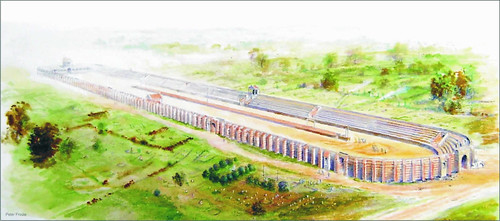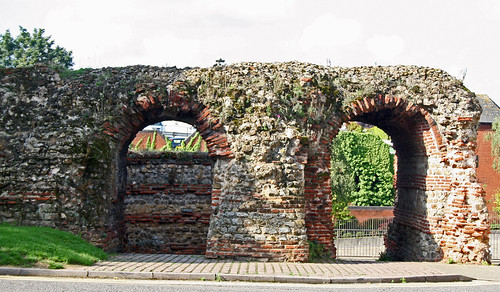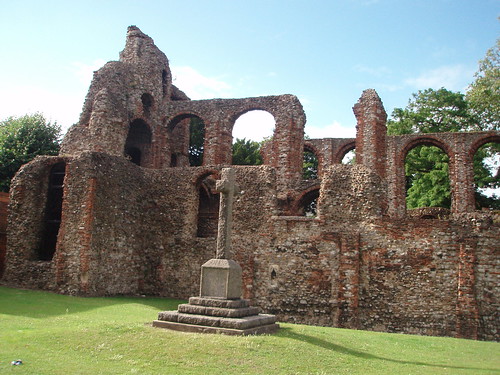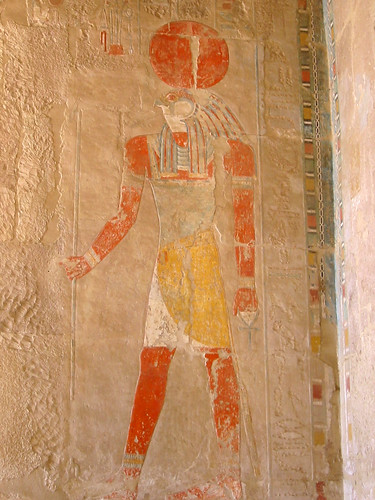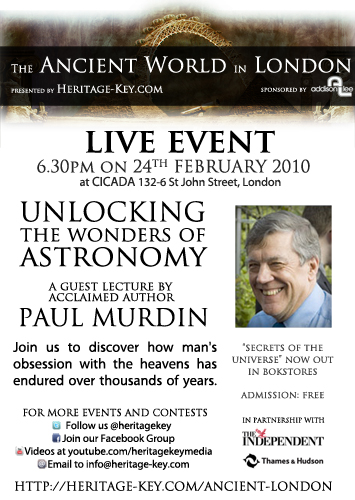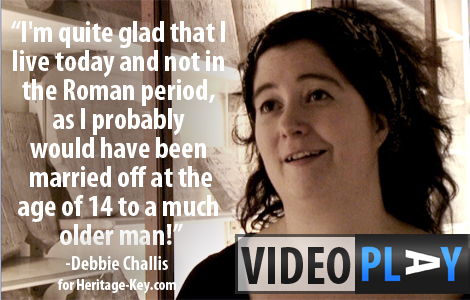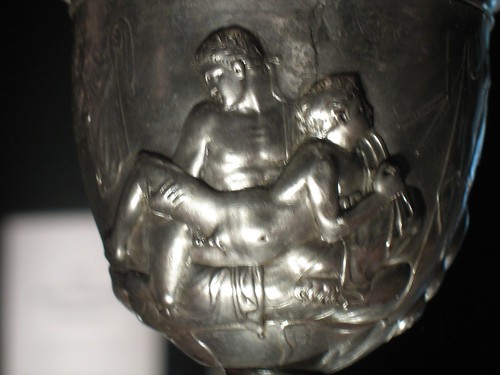Boudicca massacred 80,000  people on her way to infamy, as she left Colchester, London and St Albans little more than smouldering husks in 60AD. And it’s no surprise to learn that her appearance matched her bloodthirsty attitude. Boudicca was “a great big busty woman,” says expert Mark Hassall, “with a blonde mass of hair falling down to her shoulders. And she was wearing the torc, a symbol of virility.” (Our very own Boudicca also carries the stunning Battersea Shield – we know it’s a bit late but it’s a great example of Celtic ceremonial attire).
people on her way to infamy, as she left Colchester, London and St Albans little more than smouldering husks in 60AD. And it’s no surprise to learn that her appearance matched her bloodthirsty attitude. Boudicca was “a great big busty woman,” says expert Mark Hassall, “with a blonde mass of hair falling down to her shoulders. And she was wearing the torc, a symbol of virility.” (Our very own Boudicca also carries the stunning Battersea Shield – we know it’s a bit late but it’s a great example of Celtic ceremonial attire).
Torc (exemplified perfectly in the Snettisham Hoard), a beautiful mass of tangled gold, was normally worm by important men: it was Boudicca’s way of telling everyone that she wore the trousers (read about the recently discovered Stirling Torc Hoard here). And wear them she did, mercilessly slaughtering everyone in her path after having been betrayed by the Romans. Her husband Prasutagus was king of the Iceni tribe, in modern Norfolk, and became a client king of the invading Romans. “It was an alliance with him personally,” says Mark, “so it lasted as long as he was still there.
“But the chap in charge of the financial affairs of the Roman province said, ‘who’s fussed about some tribal chieftain?’ So they went in and took everything.” When Boudicca dissented she was beaten and her daughters raped. Destitute and demonic with rage, the queen rose up with her Celtic hoards to take Colchester, burning everything in sight. Her next stop was London, dishing out much the same treatment.
Britannia’s Roman general Gaius Suetonius Paulinus was already fighting tribesmen in Wales when he caught wind of the rebellion. Yet after having rushed down Watling Street to salvage London, he realised he’d bitten off more than he could chew. “Suetonius realised that there was no way they could hold this undefended city against the rebels, so he would have to retreat back up the line of Watling Street,” says Mark. “He said to the people of Britain, anyone whod like to come with us but old guys and women and children were virtually abandoned to their fate.”
 With London demolished, Boudicca turned her sights on Suetonius, a decision which would prove fatal. The Romans picked a dense patch of forest to face off with the Britons: “This meant that the British superiority in numbers couldnt have an effect; they couldnt wheel round and attack the Roman lines from the side.
With London demolished, Boudicca turned her sights on Suetonius, a decision which would prove fatal. The Romans picked a dense patch of forest to face off with the Britons: “This meant that the British superiority in numbers couldnt have an effect; they couldnt wheel round and attack the Roman lines from the side.
“It was inevitable that the Romans, with this superior equipment and training, should absolutely annihilate the Britons,” says Mark. Annihilate may be an understatement: in their bloodlust the Romans spared no elderley, women or children who had come to see the battle. Some might say the Celts got what they deserved after having murdered so many Roman citizens.
“After Boudicca was defeated its a bit of a mystery what happens to her,” says Mark. “Some people say she got ill and died, some people say she took poison. Theres a myth shes buried under one of the platforms at Kings Cross station, but basically we dont know.” Where do you think Boudicca is today? Answers on a postcard, or maybe just the .
HD Video: Episode 6 – Boudicca, Warrior Queen
(Transcription of this video.)
You can participate in Ancient World in London through our contests – you can also join in the fun with our virtual quests as well as have a look back at our recent lecture with astronomy author Paul Murdin. Take a look through our soon – with your help – to be complete directory of The Ancient World in London and suggest any that we may have missed. Just as well, do not hesitate to contact us if you have any suggestions for our webseries! Keep up-to-date with everything in the Ancient World in London by subscribing to our RSS feeds, or by following us onTwitter,YouTube,Facebook,FlickrandiTunes.Heritage Key – Unlock the Wonders.
